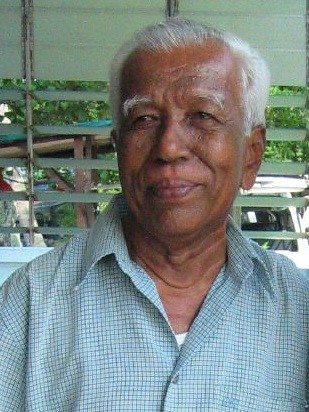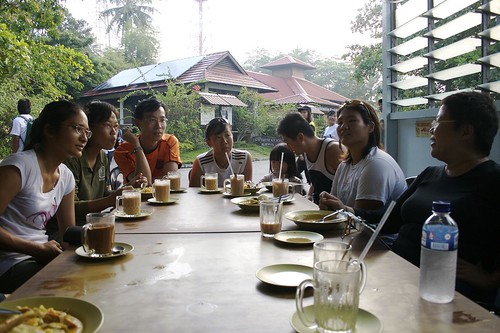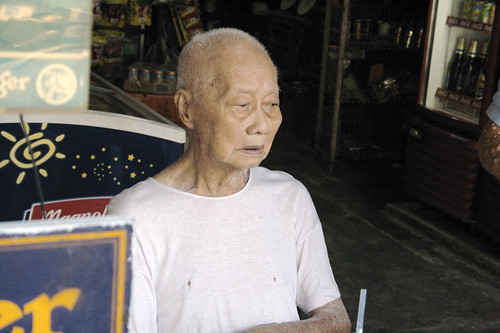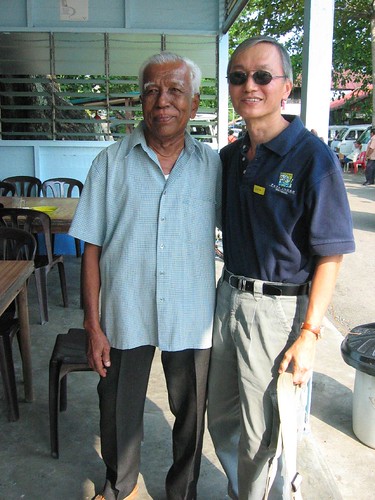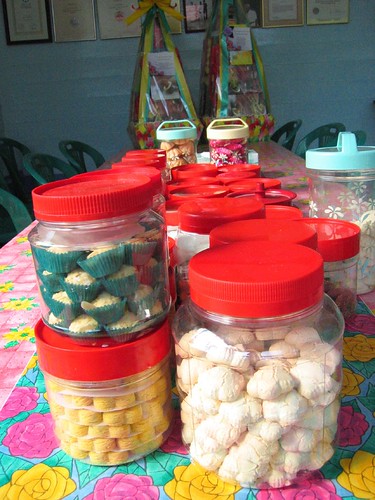"Leaving Ubin for life on mainland," by Thomas White. The Straits Times, Feb 12, 2001. Residents are being relocated as part of the 1991 Concept Plan, which foresees residential and industrial developments.MISS FADILAH NOOR walks through the creaking shell of her house for the last time, cats at her feet and some sadness in her eyes.
The cats will stay, as will the accumulated detritus of the many years of living on Pulau Ubin.
She and her friend, Mr Othman Mohamed, must leave the island.
Mr Othman, a 55-year-old retired firefighter, hauls a washing machine onto his muscular back and heads through palm trees to the road, where a friend awaits with a truck.
Miss Fadilah, 39, watches him nervously, sipping on a can of tepid coffee as Mr Othman loads her manual sewing machine onto the truck carefully.
A few more boxes, and the truck heads for the jetty.
Under a blackening sky, a shirtless, tattooed man, with a cigarette hanging from his sweaty lips, helps lower the boxes on to the deck of a rolling bumboat.
As the boat pulls away from the Pulau Ubin jetty, Miss Fadilah studies her former home with resignation.
Ahead, a looming cityscape awaits and, somewhere in that skyline, on the fifth floor of a tall building, is a one-room flat.
Barely larger than the kitchen in her house on the island, this flat will be her new home.
Mr Othman is waiting for the Housing Board to assign him his own flat.
He was born on Pulau Ubin.
And he has always been happy there, driving a taxi and selling cold drinks to adventure-seekers.
After more than 30 years as a firefighter in Singapore, he is quietly content with his simple life.
Now, he is faced with life on the mainland - his kampung life over.
Perhaps.
For as the bumboat nudges its way between tens of other boats to dock at Changi Point, he says, with a glint in his eye: 'I will go back to Ubin and live with my relatives.'
Suddenly, rain pounds down on Changi, and Mr Othman moves Miss Fadilah's boxes under the limited shelter of a temporary police post.
At her new flat in Bedok, Miss Fadilah says she is happy to move to the mainland.
'I like the new flat. I am happy in Singapore,' she says, while unlocking her new front door.
Mr Othman says he will keep his taxi on Pulau Ubin and stay with his grandparents, only metres from his old house while he waits for HDB to assign him a flat.
He will spend a few days a week with Miss Fadilah, and has already planned what will be a weekly itinerary involving buses, trains and bumboats.
'I am being forced to move. I love Pulau Ubin,' he said.
The HDB is resettling the occupants of Pulau Ubin on behalf of the Government.
Under the resettlement policy, each eligible family is given priority to rent or buy an HDB flat and an allowance of $3,000 for 'disturbance and transport'.
An eligible single person is given priority for joint allocation of a one-room rental flat with another single person and a transport allowance of $750.
They are also given ex gratia compensation for their houses and improvements made by them, such as the planting of fruit trees or building fish ponds and chicken coops.
According to the Master Plan 1998, the Urban Redevelopment Authority is keeping about half of the island for open space, while the rest is held in reserve.
This was in accordance with the 1991 Concept Plan, where parts of Pulau Ubin were designated for residential and industrial developments in the long run.
However, the Concept Plan is currently being reviewed.
A revised plan will be completed at the end of the year.
Copyright © 2001 Singapore Press Holdings Ltd. All rights reserved.
Thanks to the Singapore Heritage Mailing List.






